
"Activated charcoal" is one of the most famous medicines that almost every family has at home. Adults use it for various diseases of the digestive system and for cleansing the body, calling it safe and effective. But is it possible to give such a drug to a child and in what cases is it justified? How does it affect the child's body in case of poisoning and how to properly give this medicine to the smallest patients?
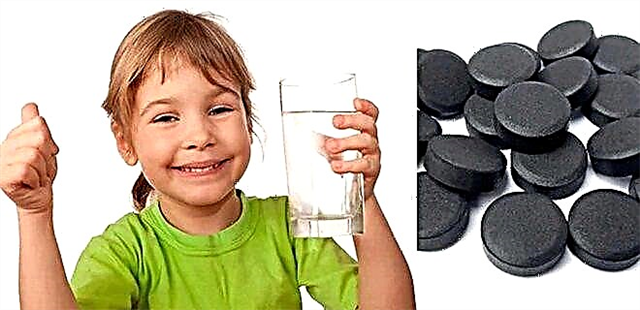
Release form and composition
"Activated carbon" is produced by many Russian companies, therefore sometimes the manufacturer's abbreviation is indicated on the packaging of the medicine next to the name. For example, the designation "MS" corresponds to the Medisorb company, and the letters "UBF" indicate that the drug is manufactured by Uralbiopharm. However, all these funds are one and the same drug in tablets containing as an active ingredient the compound of the same name - activated carbon.
Its amount in one tablet is usually 250 mg (some manufacturers also have 320 mg or 500 mg tablets), and potato starch and sometimes talc is an auxiliary ingredient in the medicine. The tablets themselves are round, slightly rough and black in color. They have a chamfer, and sometimes there is a risk. They are often placed in blisters or paper packs of 10 and are sold as 1 blister or in boxes of 20, 30, 40 or more tablets, along with instructions.

Operating principle
"Activated carbon" refers to adsorbing agents, since it has the ability to absorb different substances. This is due to the significant surface activity of the tablets. The drug is made from raw materials that contain carbon - wood, coconut shells, peat, brown coal, and so on.
First, such raw materials are placed in a chamber, where there is no access to oxygen, and exposed to very high temperatures. In order for the tablets to have many pores, due to which they have a high absorbency, an activation process is additionally used. It provides for the treatment of coal with steam or certain substances with strong heating. The result is a substance with a huge number of pores.

When such a medicine enters the digestive tract, it prevents the absorption of toxic compounds, phenol derivatives, drugs (hypnotics, glycosides, sulfonamides), alkaloids, metal salts and other substances into the blood. It is this action of "Activated Carbon" that helps to eliminate drug overdose and various poisoning. However, such a medicine poorly absorbs alkalis, iron salts and acids. He also does not cope with poisoning with methanol, cyanide or ethylene glycol.
In addition to various toxins and drugs, pills can also absorb various gases. At the same time, coal does not irritate the mucous membranes. Such a medication is not absorbed and does not change in any way in the body, but leaves through the digestive tract completely within a day.
In order for its effect to be maximized, coal intake must occur in the first hours after poisoning or the appearance of negative symptoms.


Indications
Most often, "Activated Carbon" is used for various problems with the digestive system. The medicine is in demand for vomiting, diarrhea, bloating and other dyspeptic manifestations. The medication is used for:
- flatulence;
- food toxicoinfections;
- viral hepatitis;
- bacterial diarrhea;
- rotavirus infection;
- salmonella infection;
- dysentery;
- gastritis;
- functional diarrhea;
- excessive formation of hydrochloric acid in the stomach.


Another common indication for the use of drugs is poisoning. The drug is prescribed when the dosages of various drugs are exceeded and in case of poisoning with heavy metal salts. Many doctors also prescribe Activated Charcoal for allergies in order to flush the allergens out of the body faster. The drug is used for urticaria, atopic dermatitis and other allergic diseases.
No less effective is the use of tablets with charcoal and for burn disease, as well as with an increased level of nitrogen or bilirubin in the blood, which is observed in chronic renal failure and various liver diseases. With such pathologies, taking "Activated Carbon" will help to remove excess bilirubin and other toxins from the body.
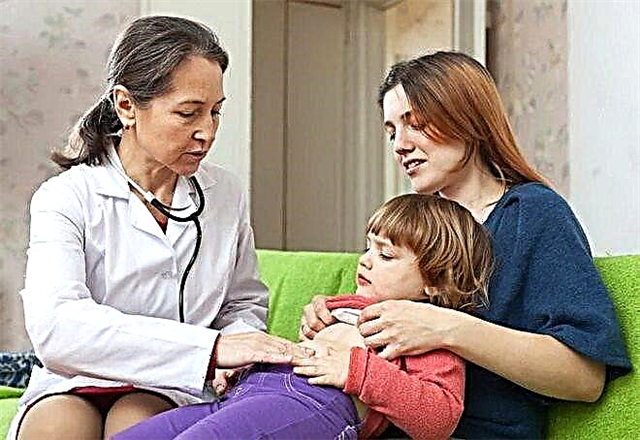
The medication can also be prescribed for patients who are undergoing endoscopic or X-ray examination. In this case, the task of using "Activated Carbon" is to reduce gas formation in the intestine before the procedure.
At what age is it allowed?
The use of "Activated Carbon" in children is possible from the very birth, that is, this drug can be prescribed by a doctor for both an infant or one-year-old child, and an older baby. However, in the first years of life, such a remedy is used exclusively as prescribed by a doctor in acute diseases, for example, in case of poisoning. It is not recommended to give tablets to small children without the advice of a specialist.
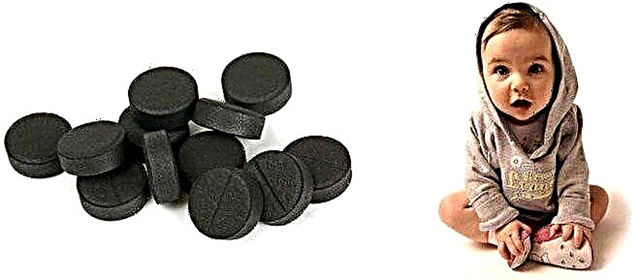
Contraindications
"Activated carbon" is used to being considered a harmless agent, however, it also has contraindications, although their list is not very large. So, the use of this sorbent is prohibited in case of ulcerative lesions of the digestive system (stomach ulcer, ulcerative colitis), as well as in case of bleeding from the intestine or stomach wall. In addition, the drug is not used in case of hypersensitivity, which, although very rare, occurs in individual patients. The tablets should not be used in patients with intestinal atony.

Side effects
The feces usually turn black after taking the drug, but this should not frighten the parents, since the color change does not have a harmful effect. In some patients, the drug can provoke constipation, loose stools and dyspepsia, and if you take "Activated Charcoal" for a long time (more than two weeks), it will negatively affect the absorption of calcium, protein, vitamins and other nutrients.


Instructions for use
The drug must be swallowed and washed down with water. For the smallest, the tablet is crushed in a spoon to make a powder. Then a little water is added to it and the resulting suspension is given to the child to drink. Do not combine the intake of "Activated carbon" and food - the medicine should be given to the patient 1-2 hours before meals or 1-2 hours after the child has eaten.
The dosage of tablets for a particular child should be calculated by weight. Most often, in an acute condition, 50 mg of the active ingredient per 1 kg of the patient's body weight is recommended. For example, if symptoms of an intestinal infection appear in a 5-year-old child weighing 20 kg, then such a patient needs 4 tablets of 250 mg per dose (50 * 20 = 1000 mg).


In case of poisoning, the medicine should be given to the child after washing the stomach in a larger dose. The maximum allowable amount of coal is 0.2 grams per 1 kilogram of the body weight of a small patient. For example, a dangerous condition was found in a baby at the age of 4 years, who weighs 17.5 kg, then the maximum dosage of "Activated Carbon" for such a child will be 3.6 grams of active substance (0.2 * 17.5), which corresponds to 14 tablets of 250 mg.
The duration of the use of "Activated Carbon" depends on the reason for which the drug was started to be given to the child. For example, if a patient has poisoning, the medication is taken only for a few days until the condition improves. If the baby has rotavirus, salmonellosis or other intestinal infection, the doctor will also often prescribe the drug for 2-3 days. In order to get rid of flatulence, the medication is used from 3 to 7 days.
In some cases, longer use is required, but it is not recommended to give "Activated Carbon" to children or adults for more than 14 days.

Overdose
If a child takes a pill that is higher than the maximum amount of the drug for their weight, they may experience nausea, general weakness, severe diarrhea, headache, or vomiting. Since the medication is not absorbed, in such a situation, symptomatic remedies can be used, and after a few days the patient's condition is normalized.
An overdose of "Activated Carbon" is also chronic, if the tablets are given to the child daily for more than two weeks. This threatens with the loss of nutrients (for example, potassium will be excreted from the body, which is dangerous for the patient's cardiovascular system), the development of dysbiosis and a decrease in immunity. If such an overdose is found, it is necessary to cancel the medicine and help the weakened body, for which symptomatic therapy is also used.

Interaction with other drugs
Due to the strong adsorbing effect, the tablets are not recommended to be given simultaneously with any other drugs, since Activated Carbon will affect their absorption (reduce it), which will lead to a weaker therapeutic effect.
For this reason, there should be a break of at least 2 hours between taking the sorbent and any other drug.

Terms of sale
"Activated charcoal" is sold in the pharmacy as an over-the-counter drug, so there are no difficulties with its purchase. The price of a medicine is influenced by the manufacturing company and the number of tablets in a pack. At the same time, the medication is available and costs from 3 rubles for 10 tablets. The average price of a pack of 50 tablets is 45-47 rubles.

Storage
"Activated carbon" should be stored at a temperature not higher than +25 degrees Celsius. It is very important to place the tablets in a dry place so that they are not exposed to any vapors or gases. If the drug is stored in a humid environment or without packaging, its sorption properties will decrease. The shelf life of the medicine is 2 or 3 years from the date of manufacture and is indicated on the package.
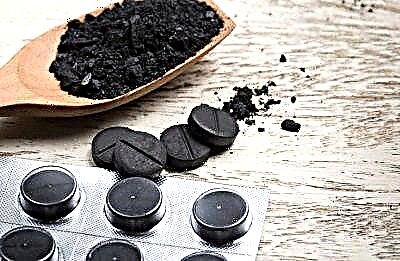
Reviews
There are mostly positive reviews about the use of "Activated Carbon" in children. In them, the drug is called effective and affordable, therefore such a sorbent is more often than other means included in the home medicine cabinet. According to moms, the drug quickly helped with poisoning, diathesis, bloating, diarrhea, rotavirus and other health problems. The disadvantages of such pills are often not noted.
Only occasionally are there complaints about the difficulty of taking a large amount of the drug (it can be difficult for a child to swallow several tablets or a suspension prepared from them).

Analogs
Instead of Activated Carbon, you can give your child another medicine with the same active ingredient, for example, Karbopect or Sorbex preparations, which are available in capsules. In addition, there is a preparation in which alumina is added to activated carbon to enhance the effect. It is called "Enterumin" and is a powder from which a suspension is made. Children are prescribed it for various indications, for example, with hepatitis, allergic reactions or intestinal infection.
In addition to preparations of activated carbon, the doctor may also advise enterosorbents that contain other active substances, for example:
- "Polysorb MP". Such a drug helps to eliminate toxins and harmful compounds due to the presence of colloidal silicon dioxide in the composition. It is produced in powder, from which a suspension is made and given to children of any age with food poisoning, diarrhea of functional genesis, renal failure and other pathologies.
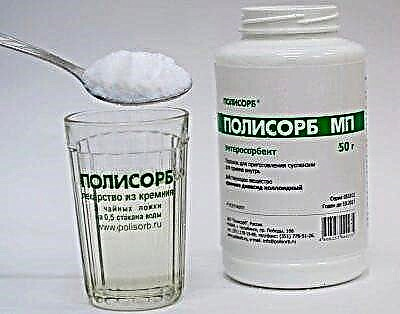
- "Smecta"... This medicine is popular due to its natural origin (it contains an aluminosilicate called smectite) and safety (it can be used at any age, even in a month-old baby). "Smecta" is produced in portioned packages, inside of which there is either a powder with a vanilla or orange flavor, or a ready-made thick caramel suspension. The drug is prescribed for food allergies, antibiotic treatment, vomiting, abdominal pain and other painful conditions. Analogs of such a drug are "Neosmectin" and "Diosmectite", which contain the same active ingredient.
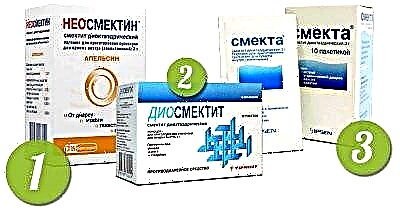
- Enterosgel. This sorbent acts thanks to polymethylsiloxane polyhydrate and is produced in the form of a gel-like mass. It binds harmful substances and does not injure the digestive tract. The drug is allowed even for babies and is in demand for heparitis, dysbiosis, intestinal infections, high acetone and other problems.

- "Polyphepan". The action of such a powdered enterosorbent is provided by a substance called hydrolytic lignin (it is obtained by processing coniferous wood). The drug is used for poisoning, burn wounds, allergies to drugs or food, asthma, dyspepsia, liver cirrhosis and other diseases. In children, it can be used at any age.

- "Enterodez"... This Russian-made adsorbent is presented in powder sachets containing povidone. Such an ingredient effectively binds toxic substances and removes them from the body, therefore Enterodez is prescribed for infectious diseases, kidney failure, burns and other problems.
It is safe and therefore used from birth.

For information on how to take this drug, see the next video.



